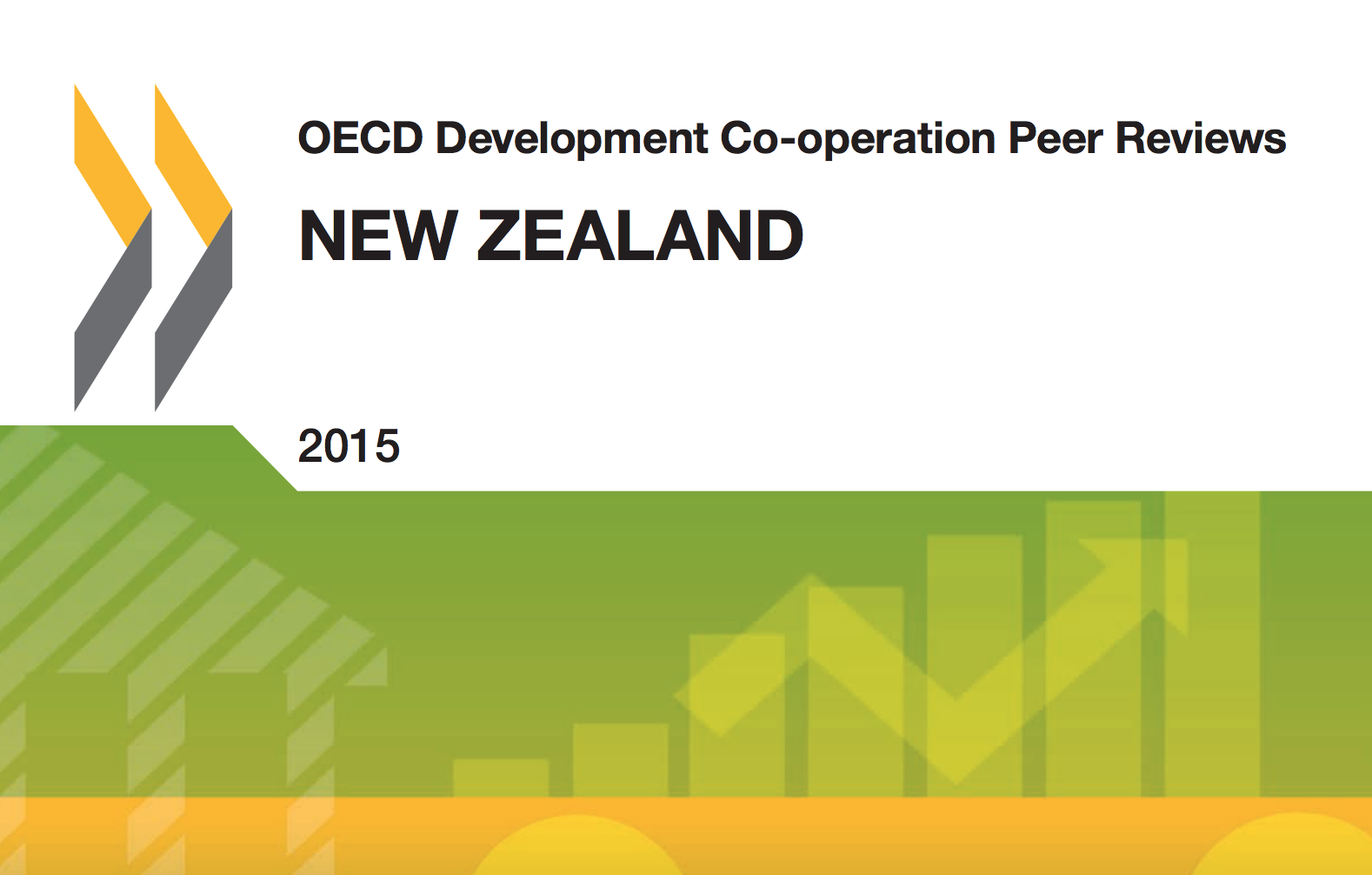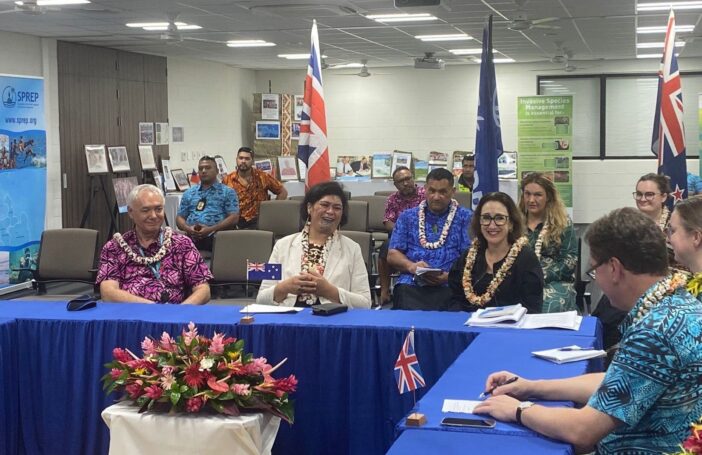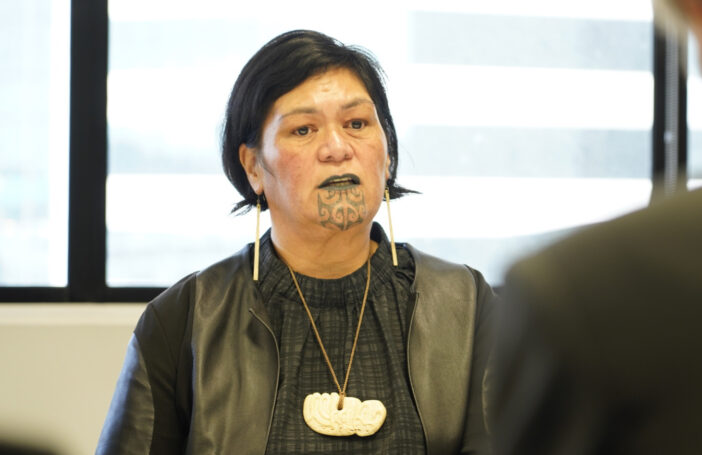The 2015 DAC Peer Review of the New Zealand Aid Programme is out today. It’s a balanced report and contains a lot the Aid Programme can, and should, be pleased about. The Peer Review also offers plenty for the Aid Programme to improve on. I can’t cover everything here, so I draw out what I see as important points. If you want the Peer Review’s findings in full, the report’s an easy read. The full report (including a summary) can be found here [pdf].
The good things the Review identified reflect the ongoing thought and hard work of Aid Programme staff. The Review points out NZ is a strong advocate for the Pacific in various global fora and organisations. Other areas the Aid Programme was commended for include continuing to decrease the number of activities and core country partners, further improving aid predictability, and coordinating well with other donors. The Review also noted NZ’s strengths in disaster risk reduction and response. Similarly praised were the Aid Programme’s work in devising a clear strategy, building a stronger focus on results, and consolidating an evaluation function.
In terms of areas to improve, many of these relate to political decision-making. The reasons why some of these things are not being done are often due to Ministerial directives.
Poverty reduction has gone off the agenda in the Aid Programme and the Review stated a need to “demonstrate that New Zealand’s programming makes a positive difference to the lives of poor and vulnerable people in its partner countries” (p. 16). As myself and others have argued previously, the Aid Programme’s poverty neglect raises concerns regarding ODA’s use to assist NZ businesses to grow export markets: without a focus on poverty, it is hard to know who really benefits. Are opportunities created for those who have none, or does ODA become a business subsidy? If the government can show how ODA can support NZ businesses and advance poverty reduction, then there is no concern. Absent this evidence, it is hard to see why it is not more effective and efficient to simply give extra money to, say, NZ Trade and Enterprise, and then allow ODA to focus on activities that expand opportunities and assist the vulnerable (which will include private sector activities, but shaped by countries’ needs, not NZ’s).
Sustainability is also highlighted as an area for improvement. The Review quotes from a 2014 MFAT synthesis of activity evaluation learnings: “[p]otential risks to sustainability of activities were raised in all evaluations” (p. 58). The sustainability question is a perennial challenge in development work – the tension between: simply getting ‘stuff’ done and having tangible results in the short-term, and the fact that sustainability often requires slow, painstaking work in building capacity and institutions that supports long-term results. The current Minister wants results and wants them fast. However, the Review highlights partner capacity challenges, recommending country strategies include “clear steps on how to support long-term capacity building” (p. 19).
Human rights, gender and the environment are not well integrated across the Aid Programme’s work. The Review identifies “a lack of capacity and sufficient resources to advance mainstreaming at both headquarters and in the field” (p. 36), and suggests more specialist skills are required, and greater management accountability.
The Review’s assessment of the Partnerships for International Development Fund is unequivocal: “[i]t is time for New Zealand to review the Partnerships Fund, and to assess whether it is suited to meeting its stated objectives” (p. 61). Alongside this, the Review notes “[e]ngagement with CSOs to reach New Zealand’s development goals is not strategic or effective” (p. 61). No surprises here. In 2012 the Partnerships Fund became the mechanism for the Aid Programme to fund civil society, the private sector and the state sector to do development work, preferably in partnerships with each other. The Partnerships Fund replaced the Sustainable Development Fund (SDF). In 2010, the SDF had replaced KOHA-PICD, which had been the main NGO funding mechanism. So over the space of only two years, a 35 year old NGO funding scheme was dismantled at the Minister’s directive, rapidly replaced by the SDF, and then again replaced by the Partnerships Fund. This speed left little space for thought about how a funding scheme could bring together the private sector, civil society and the state sector: what these entities did in international development, what their motivations were, and how best to support them to achieve development results. A review would be useful.
The Review identifies opportunities for improvement in work planned or in progress. Country strategies are making a comeback, and the Review suggests these link other existing strategic and planning documents, and also outline how human rights, gender and the environment are to be implemented (pp. 57-58, Full Report). Country strategies also offer the potential to outline a whole-of-government NZ approach to each country’s development. Another opportunity the Review noted lies in an upcoming NZ Aid Programme organisational capability assessment, which could “determine critical gaps in staff capacity and expertise, at both headquarters and country offices” (p. 53), particularly in cross-cutting issues and economics.
NZ’s plans for policy coherence for development (building domestic policies that support development elsewhere) get a push from the Review. NZ has done well in this area, such as with the Regional Seasonal Employers program, and can build on these strengths. The Review prescribes a medium to longer-term strategy to outline how NZ can “further development impact from a range of non-ODA policies” (p. 15), and clarify NZ’s private sector objectives and their delivery. As development efforts expand beyond aid, this work will become increasingly important.
Finally, the Review recommends a strategy for engaging with the NZ public about the development program (p. 20). While the government must do more, this is also a recommendation everyone in NZ’s international development community should take up. The public, as well as parliamentarians, would benefit from a deeper understanding of how NZ engages in development work overseas. This important work cannot be left to the government alone.
Overall, this five-year DAC Peer Review is a critical report, offering much for the Aid Programme to consider. As a first step, it would be good to see some of the recommendations built into the new Strategic Plan, soon to be released.
Jo Spratt is an ANU PhD candidate studying NZ aid policy. Before this, Jo was an NGO advocate, manager and capacity-developer working in the Pacific. Jo is interested in global health, NGOs, and the practice of development and aid’s role in this. She is also a Registered Nurse.





